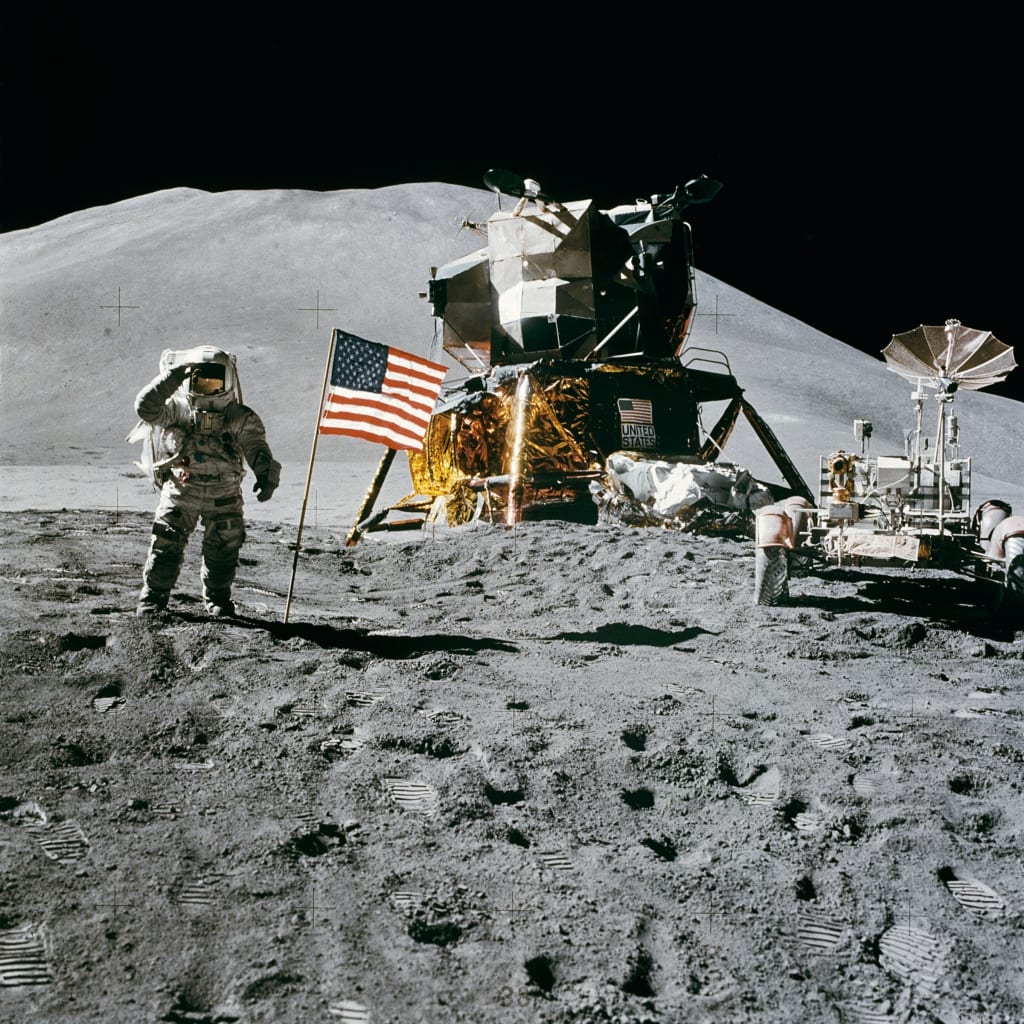Why has no one returned to the moon in the past 50 years?
"The Moon: 50 Years of Silence"

Decades have passed since the last manned moon landing, Apollo 17, which occurred in December 1972. It's high time to contemplate a return to our lunar neighbor, perhaps even establishing a more sustained presence. NASA has recognized this and is gearing up to send astronauts back to the moon, possibly by 2025, through the Artemis program. Notably, the mission aims to include the first woman to set foot on the lunar surface, marking a significant milestone in space exploration.
Now, you might wonder why such a return to the moon hasn't happened sooner. As one former NASA administrator pointed out, the challenge is not primarily scientific or technological. Rather, it has been the extended timelines and high costs associated with such ambitious projects. Space travel, especially when involving human presence, demands substantial financial resources. Although NASA has received budgets in the billions, it must allocate these funds across various projects, from telescopes to colossal rocket initiatives and missions targeting celestial bodies like the Sun, Jupiter, and Mars.
The moon itself presents formidable challenges that cannot be underestimated. Its surface is riddled with craters and boulders, making landing a complex endeavor. Moreover, moon dust, scientifically known as regolith, poses a unique threat. Formed over eons by meteorite impacts, it adheres to and can swiftly damage spacesuits, vehicles, and systems. The lunar habitat is no picnic either, as the moon lacks a protective atmosphere. This results in extreme temperature fluctuations, with 14 days of scorching sunlight followed by 14 days of complete darkness.
NASA is actively developing solutions, including dust and sun-resistant spacesuits and vehicles. They are also working on a system that could supply electricity during lunar nights, which could prove beneficial for future Mars missions. However, the challenges extend beyond finances and technology. Human involvement is crucial, and NASA must attract top talent. The young average age of mission control personnel during Apollo 13 highlights the need for experience and expertise from a young age.
Notably, it's not just NASA taking on the challenge of space travel. Private individuals with significant resources have been actively revolutionizing space travel in recent years. Some are developing innovative rockets designed for lunar landings. Although NASA succeeded in landing 12 astronauts on the moon during the Apollo program, their missions were not intended to create a sustainable lunar environment for humans.
The concept of a lunar space station has been on scientists' minds for some time. It's a logical step, given the moon's proximity, which allows for learning and experimentation without the immense risks associated with deeper space missions. A moon base could produce fuel for deep space journeys, host telescopes for improved observations, and support lunar tourism. Moreover, it could be a stepping stone for understanding how to make Mars habitable.
The Apollo Moon program was a monumental achievement, involving hundreds of thousands of people from all over the United States. It had its share of unfortunate events, such as the fire on the Apollo 1 launch pad and the oxygen tank incident on Apollo 13. The iconic Saturn V rocket, still the most powerful successfully flown rocket, played a pivotal role in these missions.
However, since the Apollo program, existing rockets and space shuttles can't venture beyond low Earth orbit and aren't equipped for moon missions. Nevertheless, considerable progress has been made on Earth, and NASA's Artemis program aims to send astronauts back to the moon. It begins with Orion, an uncrewed spacecraft that will orbit the moon and return to Earth, serving as an automated test drive for the program.
To sustain life on the moon, there are many aspects to consider. Due to extreme temperatures, the lack of oxygen, meteorite threats, and unrelenting radiation, living underground on the moon may be necessary. Transportation to and from the moon is being revolutionized by both large and small companies, with space taxis capable of making multiple lunar round trips without re-entering Earth's harsh atmosphere.
Furthermore, the moon's lighter gravity and abundant ice reserves offer advantages for producing rocket fuel. Special tools like the Trident drill can excavate lunar ice, which can then be converted into fuel and stored at a lunar space gas station. This innovation could support long-duration missions, including those headed for Mars.
In summary, the prospect of returning to the moon is becoming a reality with NASA's Artemis program and the active participation of private entities. The challenges are considerable, but the potential benefits, including lunar tourism, deep space missions, and a better understanding of the moon's origins, make the endeavor worthwhile. It's an exciting time for space exploration, and as we look to the future, life on the moon and beyond holds great promise.






Comments
There are no comments for this story
Be the first to respond and start the conversation.